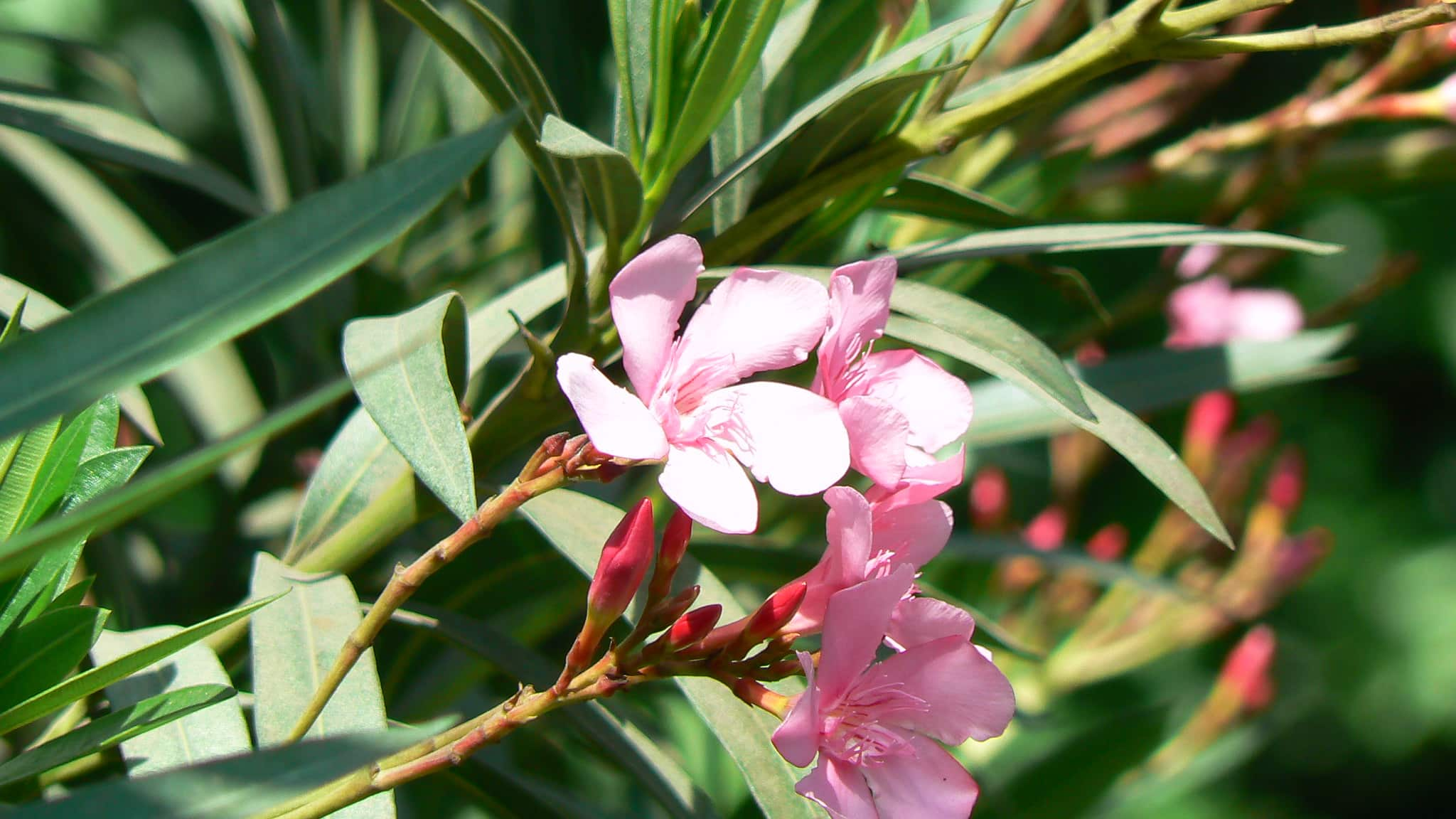
Diseases and pests of oleander
All our tips to recognise and eradicate pests and diseases of oleander
Contents
Common in Mediterranean gardens, oleander (Nerium oleander) is valued for its long summer flowering, either single or double, in shades of white, salmon, pink, or varying intensities of red. Fast-growing but with limited hardiness, it is often grown in pots and wintered in regions with milder winters. Highly drought-resistant and particularly accommodating in terms of soil and maintenance, oleander does require substantial sunlight. It is especially sensitive to humidity and excess water. If it does not have suitable growing conditions, oleander can develop diseases and be attacked by parasitic pests. We provide natural solutions to combat them.
Bacterial scab or bacteriosis
Description
As its name suggests, bacterial canker is caused by a bacterium, Pseudomonas syringae, transmitted by piercing insects. However, it can also target plants weakened by stress, poor planting conditions, or aggressive cultural practices such as repeated pruning. It is an “opportunistic” bacterium.
Symptoms
Bacteriosis is recognised by the blackish cankers or warts that appear on the veins of the leaves and invade the stems, flower buds, and branches. These growths or charcoal-like tumours are covered with bark that cracks to release spores. This bacterium is highly volatile and can be spread by tools, as well as by wind and water.
Prevention
As there is no real treatment for this bacteriosis, the only effective way to combat it is prevention: thoroughly disinfect pruning tools, limit pruning, and water the plant regularly but without excess. Adding compost also helps the oleander to remain strong.
Natural Treatments
- Cutting and burning the diseased parts of the oleander to stop the spread.
- A spray of Bordeaux mixture every 3 months seems effective in slowing the bacterium.
Botrytis cinerea or grey mould
Description
This is a microscopic fungus that overwinters in the form of mycelium on parts of dead plants. It primarily develops in cases of excessive moisture, on a weak plant, causing this grey rot.
Symptoms
A grey felt-like growth develops on the leaves and stems that weaken. The tissues die quickly, and large brown-red spots appear on the leaves and stems, which eventually dry out. Flower buds may also be affected and struggle to open.
Prevention
Once again, good cultural conditions will prevent the appearance of this grey rot:
- Ensure good soil loosening and amend with trace elements.
- Water regularly but without excess. The oleander should be planted in well-draining soil.
- When overwintering the oleander in a pot, ensure sufficient ventilation for the plant.
Natural Treatments
- Regular and close applications of Bordeaux mixture can be effective in limiting the spread of this fungus.
- Remove and burn all diseased parts of the plant.
Discover other Nerium - Oleander
View all →Available in 0 sizes
Available in 4 sizes
Available in 1 sizes
Available in 2 sizes
Available in 1 sizes
Available in 1 sizes
Available in 1 sizes
Available in 4 sizes
Available in 3 sizes
Available in 2 sizes
Foliar spot disease
Description
This disease is caused by a fungus, Ascochita heteromorpha. It primarily affects oleanders, especially in humid climates.
Symptoms
As its name suggests, this cryptogamic disease causes round, brown spots to appear on the leaves, sometimes surrounded by a purple halo. The leaves dry out and eventually fall off. Spots may also be visible on the stems.
Prevention
Since this disease is mainly caused by excessive humidity, it is important to limit watering, improve soil or pot drainage, and winter the oleander in a well-ventilated, sunny location.
Natural Treatments
- If the disease is already established, treat with Bordeaux mixture at the end of winter or the beginning of spring.
- Remove and burn affected leaves.
Read also
When and how to take oleander cuttings?Scale insects
Description
Oleander is primarily attacked by two types of scale insects: hard scales and mealybugs. These are small insects that are almost invisible to the naked eye and settle on the underside of the leaves. They feed on the sap of the oleander.
Symptoms
Mealybugs are recognised by the white, cottony clusters on the leaves and stems. They produce honeydew, a sticky substance that coats the leaves and encourages the development of sooty mould.
In contrast, hard scales do not produce honeydew but are distinguished by a sort of shell. They pierce the leaves of the oleander, causing them to necrose and dry out. Hard scales also create crusty patches on the branches.
Prevention
Potted oleanders should be wintered in a well-ventilated, bright, and not too warm room.
Natural Treatments
- Wipe all the leaves with a cotton pad soaked in 90°C alcohol, then rinse with clear water to remove all the waxy shells of the scales.
- Spray an anti-scale solution made of one teaspoon of liquid black soap, one teaspoon of rapeseed oil, and one teaspoon of methylated spirits, diluted in one litre of water. Make an initial spray, ensuring to target the underside of the leaves, followed by a second spray half an hour later. Then, repeat the process once a week.
- Remove and burn the affected stems if the infestation is significant.
Aphids on Oleander
Description
Oleander aphids are most often yellow or green. They proliferate on young shoots, flower buds, and flowers of the plant. They can also be found on the underside of leaves. They generally appear during spring and throughout summer.
Symptoms
Like scale insects, aphids suck the sap and produce honeydew that sticks to the leaves. Affected leaves curl in on themselves and become covered in blisters. Aphids are not fundamentally dangerous to oleander, but their honeydew causes sooty mould to develop.
Prevention
- Limit the application of nitrogen-rich fertilisers that can disrupt the composition of the sap. Aphids generally target oleanders that are too vigorous.
- Plant around oleanders species that attract natural predators of aphids, such as ladybirds, hoverflies, and lacewings…
Natural Treatments
- If aphid numbers are low, spraying the infested areas with a jet of water is sufficient.
- Otherwise, spray a solution made of 3 teaspoons of liquid black soap diluted in one litre of water.
Weaving spider mites
Description
Also known as red or yellow spider mites, spider mites are microscopic arachnids. They are compared to spiders because they weave fine webs on the undersides of leaves and feed on the contents of leaf cells.
Symptoms
Leaves gradually discolour, becoming dull and grey before turning yellow, drying out, and eventually falling off. Tiny silky webs appear.
Prevention
As spider mites thrive in warmth and dryness, they mainly develop during the winter months. Regular misting is therefore essential. Additionally, the oleander in pots should be placed away from heat sources.
Natural Treatments
- Water oleanders thoroughly with a jet
- Spray with wettable sulphur diluted in water. This spraying should be repeated a week later, always on a day with optimal sunlight and a temperature of at least 22 °C.
- Subscribe!
- Contents
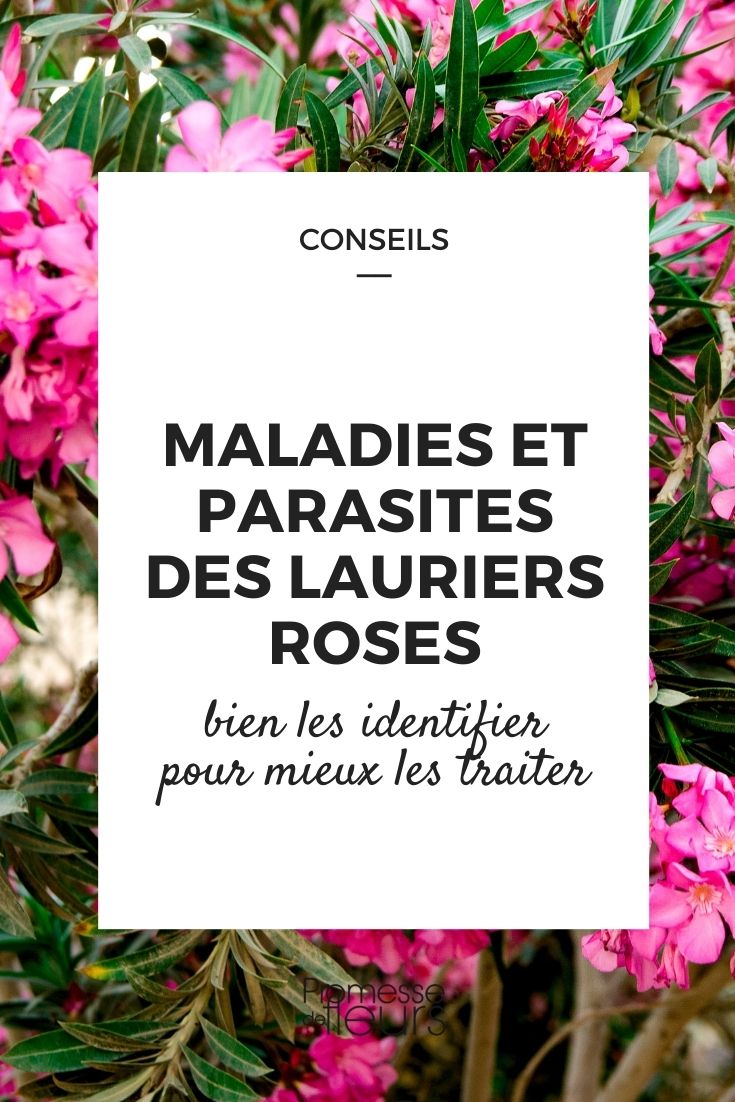































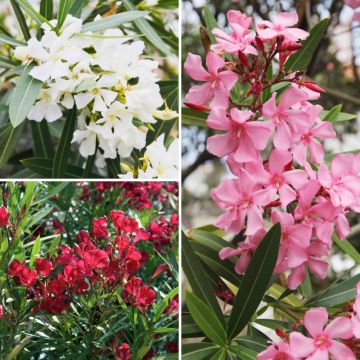
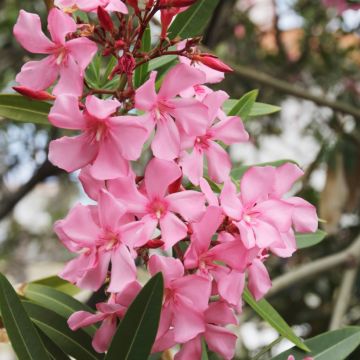
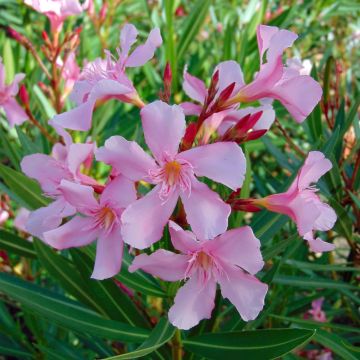
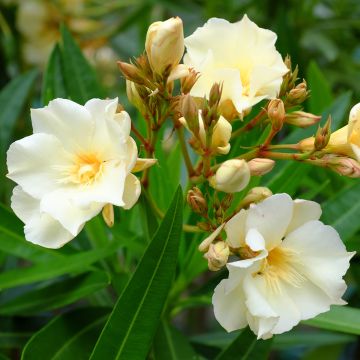
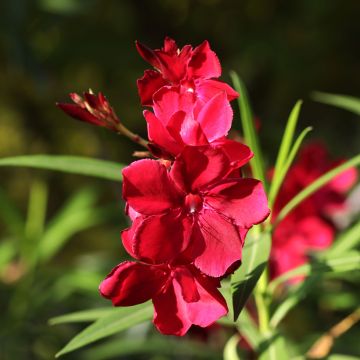
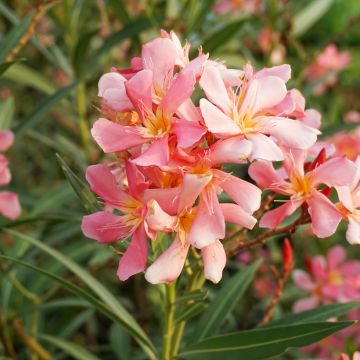
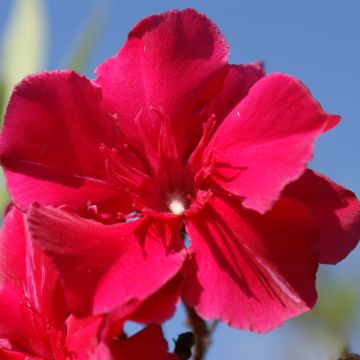
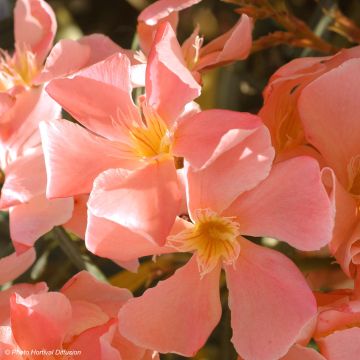
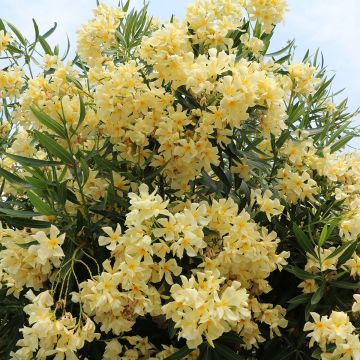
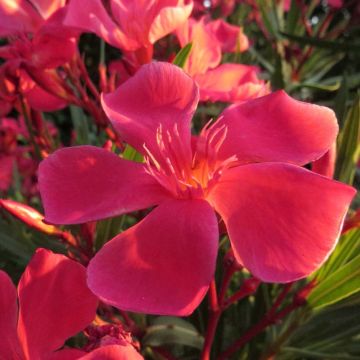
Comments